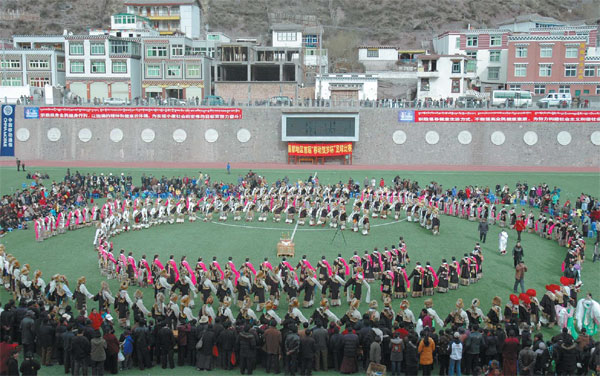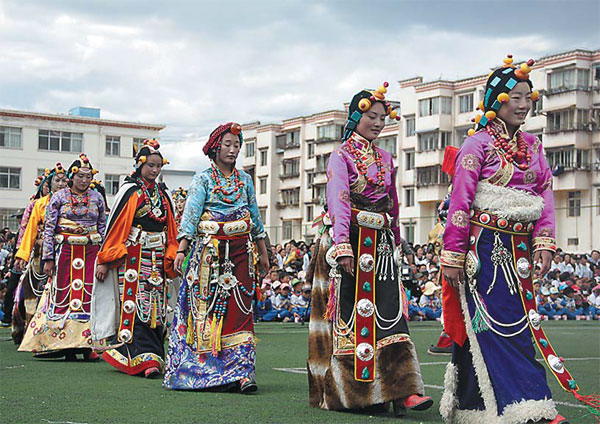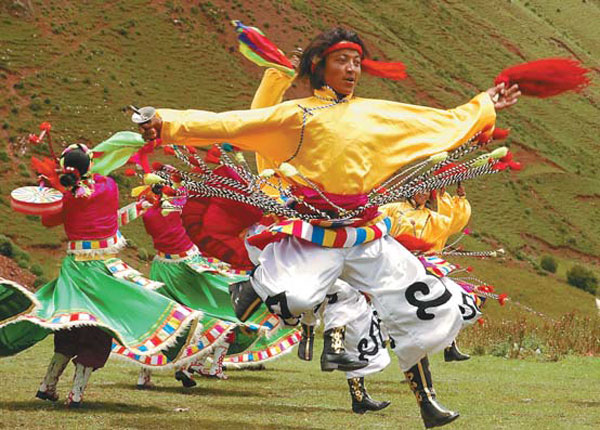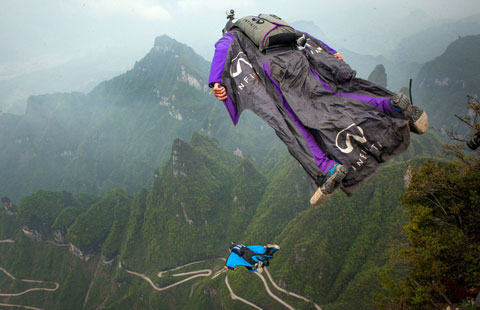Dance of the culture vultures
Updated: 2014-07-04 08:09
By Hu Yongqi and Da Qiong (China Daily Europe)
|
|||||||||||

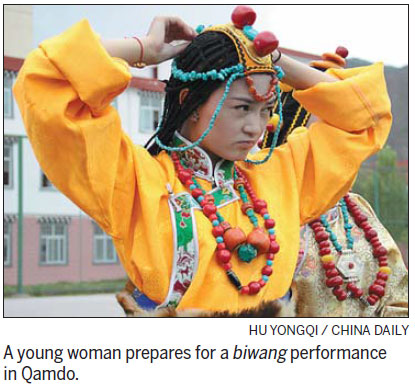
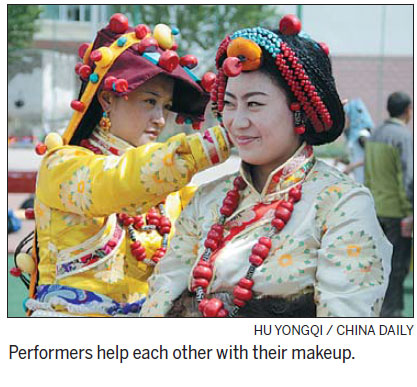
|
Residents perform Guozhuang dance, a Tibetan folk art form, at Changdu National Stadium in Tibet. Provided to China Daily |
|
Performers prepare for the dance of Xianzi, a Tibetan folk art, in Changdu, Tibet. Hu Yongqi / China Daily |
|
Young people dance in Qamdo prefecture in Tibet. Provided to China Daily |
Central and local governments are pouring money and effort into protecting and preserving traditional art forms in the Tibet autonomous region
Traditional music is played through a public sound system to more than 1,000 people who form a number of concentric circles and begin a traditional dance.
We are in Liberation Square, in Qamdo prefecture, the largest city in the east of the Tibet autonomous region, where locals perform the dance every day, even during rainstorms.
As the dance, known as the gordro, progresses, some leave the circle, to be replaced by others. Age is irrelevant; young and old enjoy the simple pleasure of dancing together. However, for many years, people in Qamdo were unable to find an open space to practice the dance, so they crowded around fire pits to entertain themselves by having a few drinks and singing.
Then, in 2012, a 1-hectare square was built to accommodate the dancers, and this simple art form was revived with increasing vitality among locals and tourists.
When China Daily visited, gordro dancer Nyima Tsering walked among the crowd, ready to provide guidance to anyone in need.
When the city began a reconstruction project two years ago, Nyima Tsering and his troupe took turns leading the dancing in the square every night, which contributed greatly to its popularity..
"The dance is easy to learn and it doesn't really matter where it's performed," the 36-year-old says. "It won't die as long as we can maintain the very essence of grassroots art, which is to get people involved."
Last year, eight of Qamdo's local art forms, including the gordro dance, was added to a national list of programs to protect "intangible culture", expressions of culture passed down from generation to generation. Other art forms listed include performances on a six-stringed lute-like instrument and specialized techniques such as those used to extract salt. The regional government listed a further 15.
Over the past five years, the prefecture has spent 2.6 million yuan ($418,000) promoting the local cultural heritage, the Qamdo Administration of Culture says.
In Tibet, more than 1,000 forms of intangible culture now receive dedicated support from local and central governments, and local authorities have done a survey to record many aspects of local culture, some of which have almost disappeared.
The regional government has also taken a range of measures - including increasing the amounts of subsidies for "inheritors", those whose family members have passed down their knowledge, and maintain the traditional arts - to encourage a revival of indigenous culture among the younger generation.
Contact the writers at huyongqi@chinadaily.com.cn.
(China Daily European Weekly 07/04/2014 page4)
Today's Top News
Gambling costs World Cup fans their lives
US supports Ukraine's decision to suspend ceasefire
It's all about making a spectacle
China likely to see 7.5% growth in second quarter
Palace Museum feeling the squeeze of visitors
Myanmar pagoda replica given to China
US sends 300 more troops to Iraq over concerns
Hong Kong at the crossroads
Hot Topics
Lunar probe , China growth forecasts, Emission rules get tougher, China seen through 'colored lens', International board,
Editor's Picks

|

|

|

|

|

|
